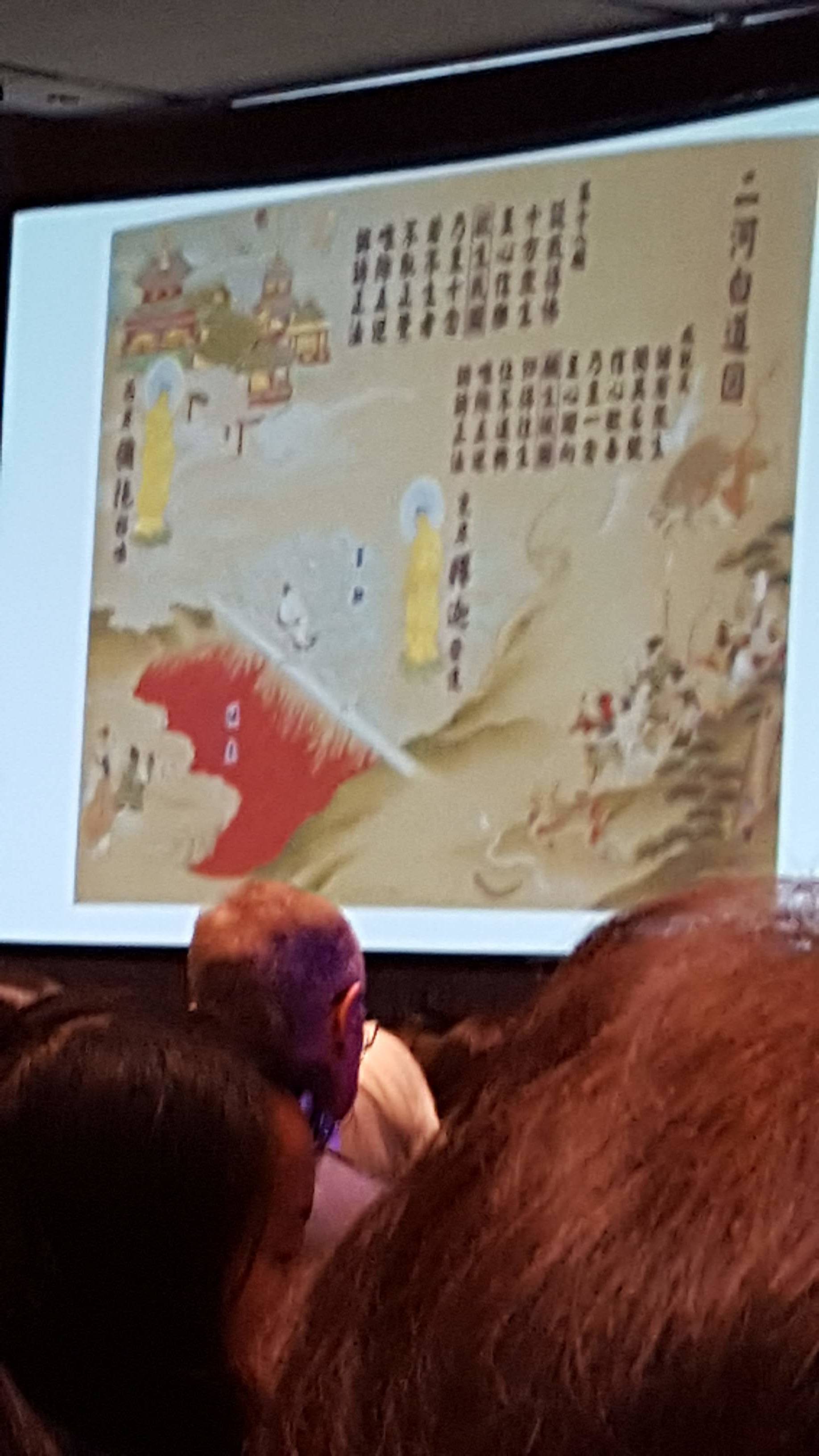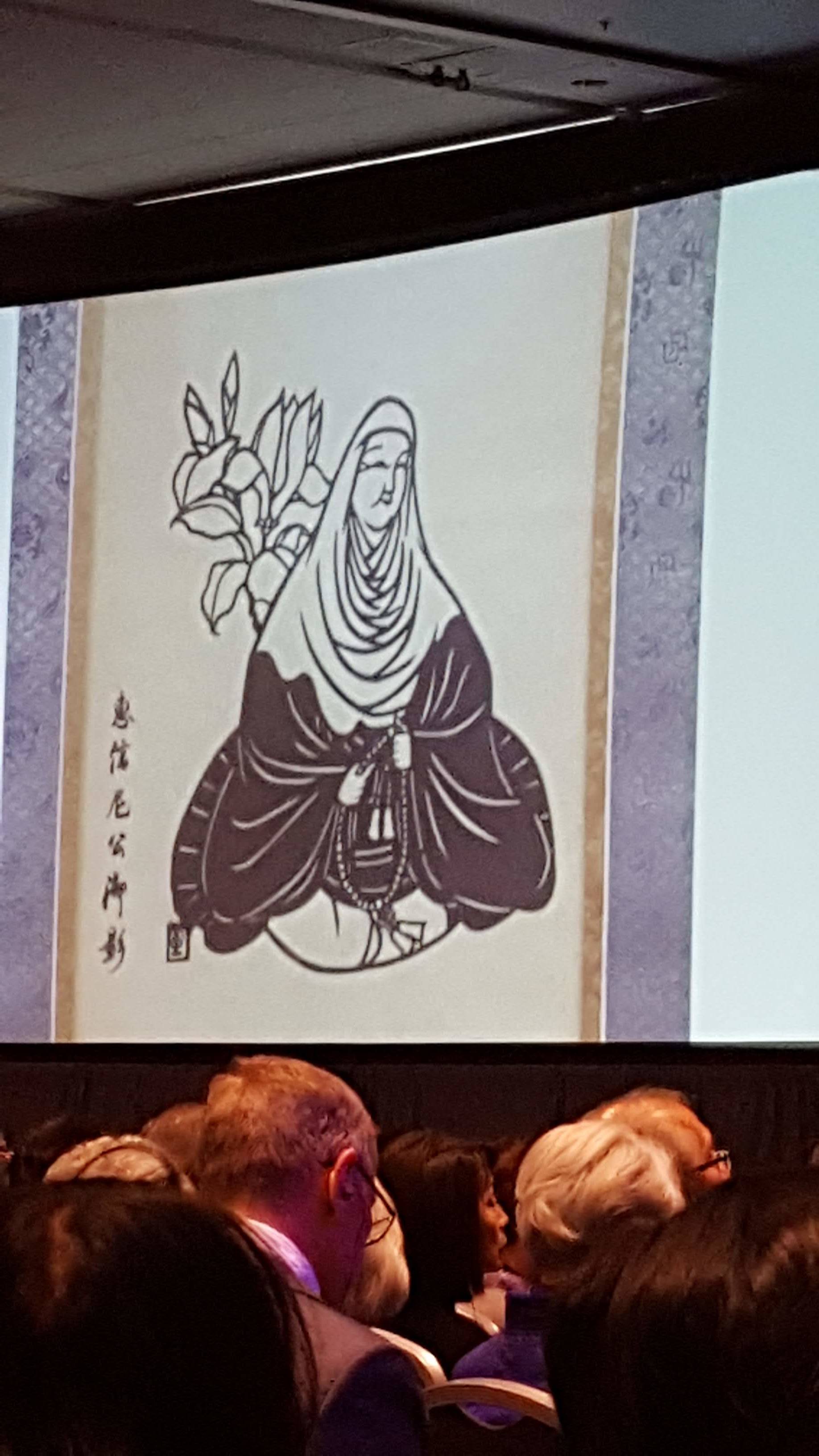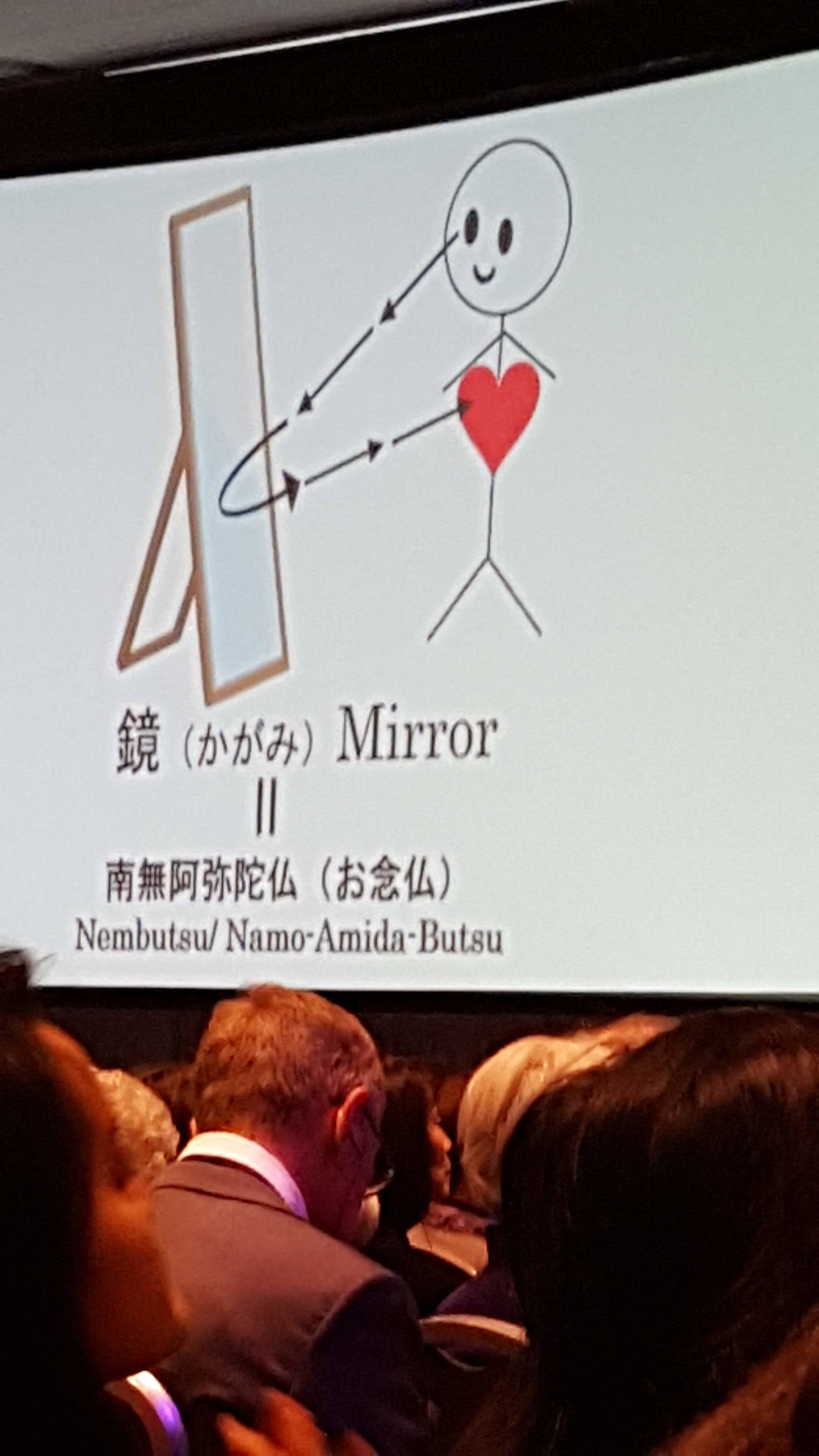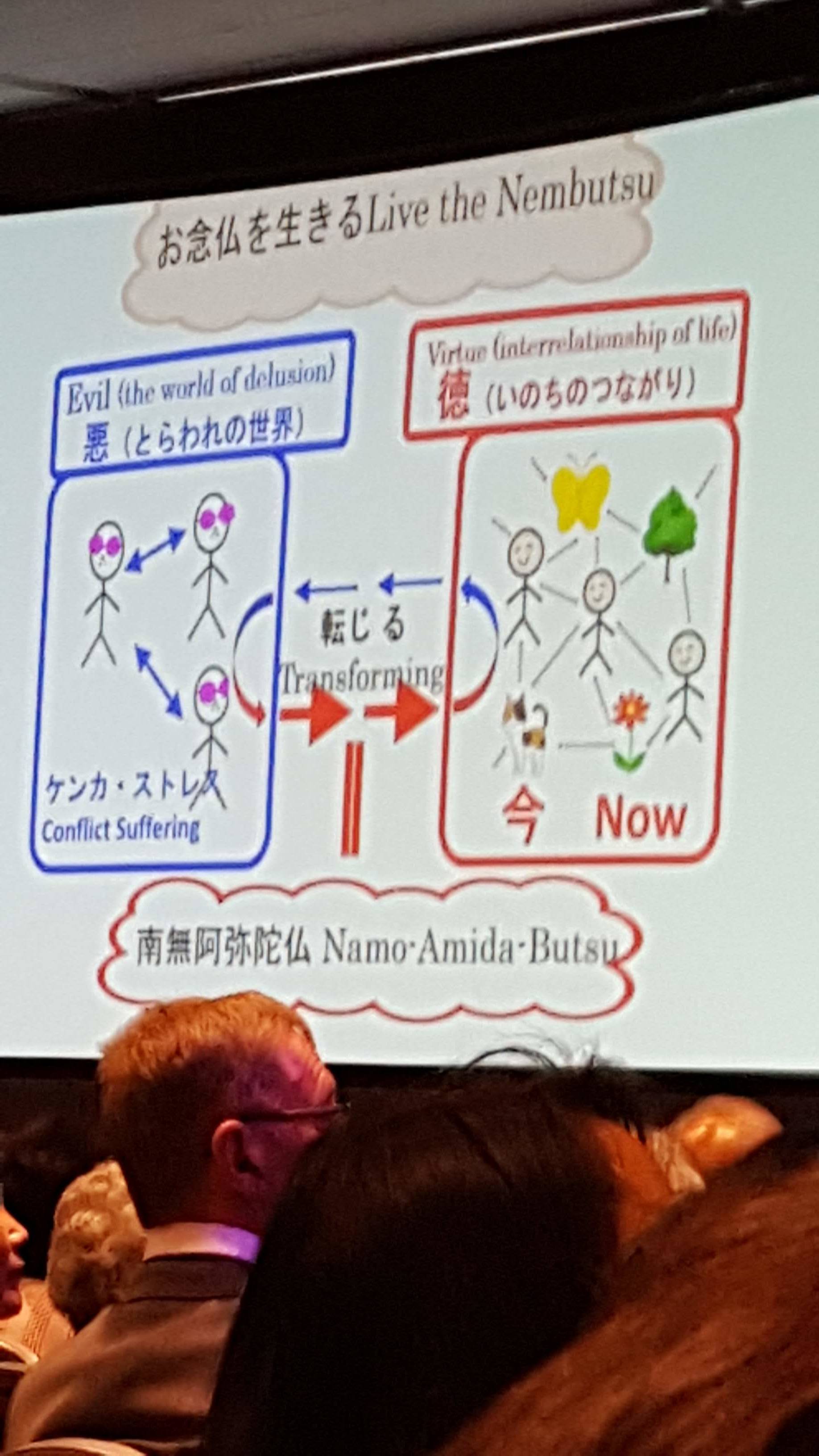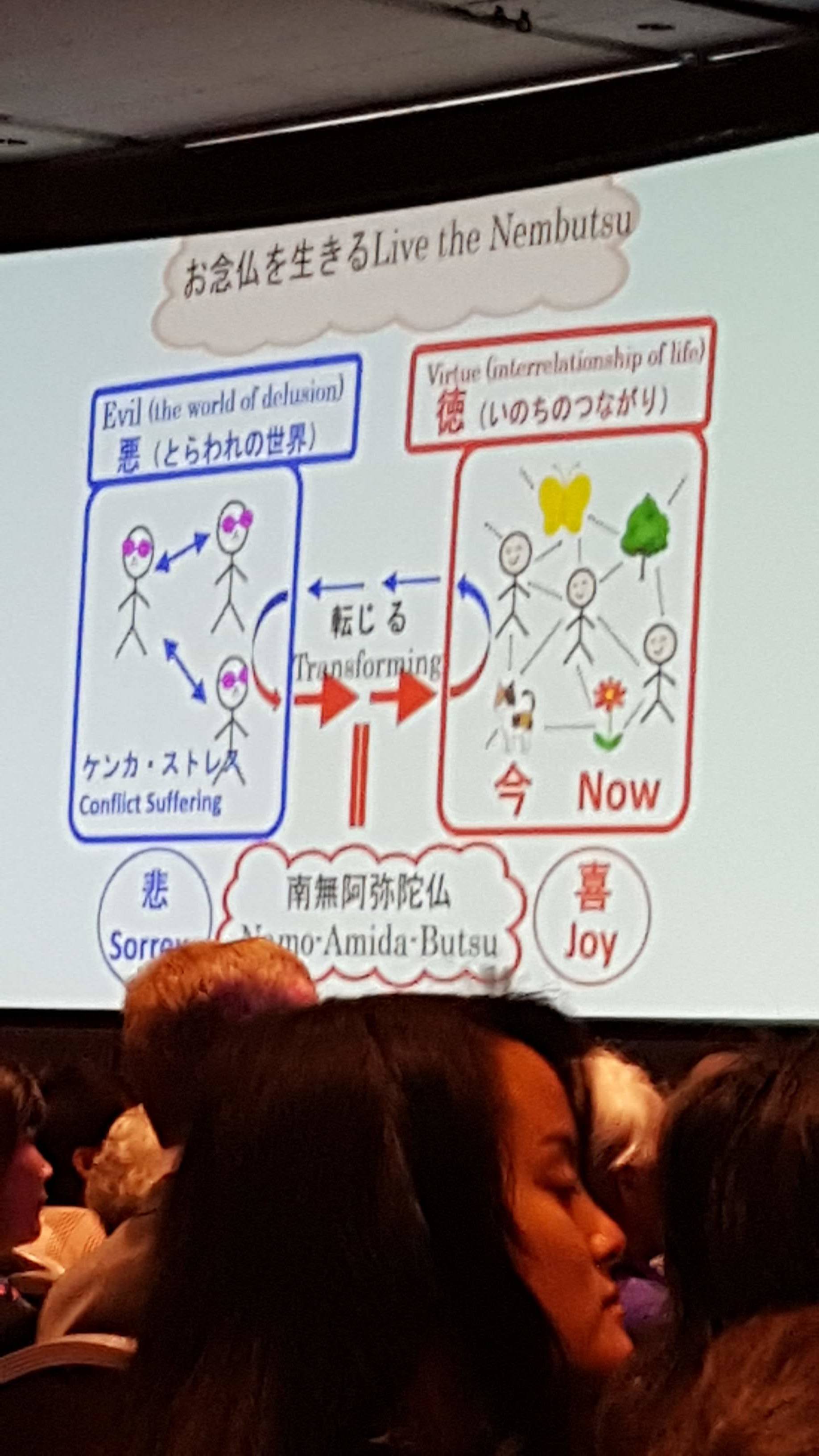16th World Buddhist Women's Conference Keynote Speakers:
Keiko Toro: Independent Scholar
In her keynote speech, Keiko Toro expresses that the path we as ordinary people can take to live a life free of greed and anger is the narrow path of the Nembutsu. Using an illustration of a famous Buddhist scroll, she explains how a traveler, feeling fear and anxiety, hesitates to cross the river of fire and the river of water. His dilemma is that if he does not proceed, he will be killed by bandits and wild beasts. There is a narrow path between the two rivers and away from the woods of bandits and wild beasts. This path which takes a 100 paces to leap through, is the narrow path of the Nembutsu. She states that the traveler hears a beckoning call encouraging him to walk through this path to the Western shore without fear or hesitation. The call assures him that he will be protected and, once he crosses this path, he will receive a life of boundless joy and happiness. The call is from Amida Buddha guiding him to the Nembutsu.
In this interpretation of the scroll, Ms. Toro helps us to understand the symbolism of the passage. She states that the river of water represents our greed and the river of fire represents our anger. The wild beasts and bandits represents our past By following the 8 Fold Path and reciting the Nembutsu, we can be free from our own doubts, fears, anger, and greed. We can be free of our attachments, and find peace and happiness in our lives.
In her power point presentation, the mirror represents the Nembutsu and when we look through it, we can see the existence of the river of fire and the river of water in our hearts. We can see our blind passions and understand the origin of our conflicts and sufferings. Once we are aware of our blind passions, we have in our grasps a true understanding of humility. We become less judgmental and critical of others. We no longer see life through rose colored glasses as illustrated in the charts: the life of delusion, where we often judge others due to our unrealistic expectations. By reciting the Nembutsu and by listening to the dharma, we can follow our hearts with Amida Buddha and transform our life of conflict and suffering to a life of truth, peace and freedom. This is what she refers to as Reverse Consciousness.
Reverend Yukiko Motoyoshi: Resident Minister, Buddhist Church of Stockton
Reverend Motoyoshi was greatly influenced by her father and grandmother. They helped her understand her insecurities and problems and accepted her for whom she was. It brought her tremendous relief as a result of this awareness. She understood that the lowest person can be saved with the Nembustsu. She was able to face her own inner shadows and feelings of insecurities. She realized that her inferiority complex should not be ignored because it shows how one perceives oneself. True wisdom is to recognize that which is false as false. We need to take responsibility for what has formed. No matter how much you recite the Nembutsu, our wrong doings won’t be forgiven or erased. Through Amida Buddha, we have a dynamic working of the Truth. The wisdom that we gain helps us to see ourselves truly as we are.
Awareness through the four I’s:
· I as we see ourselves
· I as others see us
· I as we and others see through our actions
· I that is embraced by Amida Buddha with all its flaws and insecurities; where pain and difficulties are recognized just as they are. Through Amida Buddha’s wisdom and this understanding of I, we can become more humble, kind and empathetic to others.

